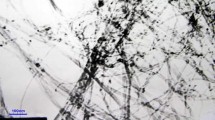Abstract
The main aim of the study was to analyze the influence of six machining parameters on the chip shape formation and surface roughness as well during turning of Steel 30CrNiMo8. Three components of cutting forces were used as inputs together with cutting speed, feed rate, and depth of cut. It is crucial for the engineers to use optimal machining parameters to get the best results or to high control of the machining process. Therefore, there is need to find the machining parameters for the optimal procedure of the machining process. Adaptive neuro-fuzzy inference system (ANFIS) was used to estimate the inputs influence on the chip shape formation and surface roughness. According to the results, the cutting force in direction of the depth of cut has the highest influence on the chip form. The testing error for the cutting force in direction of the depth of cut has testing error 0.2562. This cutting force determines the depth of cut. According to the results, the depth of cut has the highest influence on the surface roughness. Also the depth of cut has the highest influence on the surface roughness. The testing error for the cutting force in direction of the depth of cut has testing error 5.2753. Generally the depth of cut and the cutting force which provides the depth of cut are the most dominant factors for chip forms and surface roughness. Any small changes in depth of cut or in cutting force which provide the depth of cut could drastically affect the chip form or surface roughness of the working material.







Similar content being viewed by others
References
S. Karam, R. Teti, Wavelet transform feature extraction for chip form recognition during carbon steel turning. Procedia CIRP 12, 97–102 (2013)
T. Segreto, A. Simeone, R. Teti, Chip form classification in carbon steel turning through cutting force measurement and principal component analysis. Procedia CIRP 2, 49–54 (2012)
R. Teti, I.S. Jawahir, K. Jemielniak, T. Segreto, S. Chen, J. Kossakowska, Chip form monitoring through advanced processing of cutting force sensor signals. CIRP Ann. Manuf. Technol. 55(1), 75–80 (2006)
Z.J. Viharos, S. Markos, C. Szekeres, (2003). ANN-based chip-form classification in turning. In Proceedings of the XVII. IMEKO World Congress–Metrology in the 3rd Millennium (pp. 1469–1473)
M.V. Ramana, G.K.M. Rao, D.H. Rao, CHIP morphology in turning of Ti-6Al-4V ALLOY under different machining conditions. J. Prod. Eng. 17(1), 27–32 (2014)
B.A. Khidhir, B. Mohamed, Study of cutting speed on surface roughness and chip formation when machining nickel-based alloy. J. Mech Sci Technol 24(5), 1053–1059 (2010)
L. Zhu, H. Li, C. Liu, Analytical modeling on 3D chip formation of rotary surface in orthogonal turn-milling. Arch Civil Mech Eng 16(4), 590–604 (2016)
A.K. Balaji, R. Ghosh, X.D. Fang, R. Stevenson, I.S. Jawahir, Performance-based predictive models and optimization methods for turning operations and applications: part 2—assessment of chip forms/chip breakability. J. Manuf. Process. 8(2), 144–158 (2006)
J.L. Andreasen, L. De Chiffre, Automatic chip-breaking detection in turning by frequency analysis of cutting force. CIRP Ann. Manuf. Technol. 42(1), 45–48 (1993)
H.Y. Pwu, H. Hocheng, Chip formation model of cutting fiber-reinforced plastics perpendicular to fiber axis. J. Manuf. Sci. Eng. 120(1), 192–196 (1998)
G.G. Ye, M.Q. Jiang, S.F. Xue, W. Ma, L.H. Dai, On the instability of chip flow in high-speed machining. Mech. Mater. (2017). doi:10.1016/j.mechmat.2017.02.006
M.S.J. Hossain,, N. Ahmad, Surface roughness prediction modelling for commercial dies using ANFIS, ANN and RSM. Int. J. Ind. Syst. Eng. 16(2), 156–183 (2014)
M.S.J. Hossain, N. Ahmad, Artificial intelligence based surface roughness prediction modeling for three dimensional end milling. Int. J. Adv. Sci. Technol. 45, 1–18 (2012)
S.J. Hossain, N. Ahmad, Adaptive neuro-fuzzy inference system (ANFIS) based surface roughness prediction model for ball end milling operation. J. Mech. Eng. Res. 4(3), 112–129 (2012)
S.S Roy, (2005). Design of adaptive neuro-fuzzy inference system for predicting surface roughness in turning operation. J. Sci. Ind. Res. 64(9), 653–659
Y. Jiao, S. Lei, Z.J. Pei, E.S. Lee, Fuzzy adaptive networks in machining process modeling: surface roughness prediction for turning operations. Int. J. Mach. Tools Manuf. 44(15), 1643–1651 (2004)
R. Taormina, K.W. Chau, Data-driven input variable selection for rainfall–runoff modeling using binary-coded particle swarm optimization and Extreme Learning Machines. J. Hydrol 529, 1617–1632 (2015)
J. Zhang, K.W. Chau, Multilayer ensemble pruning via novel multi-sub-swarm particle swarm optimization. J. UCS 15(4), 840–858 (2009)
W.C. Wang, K.W. Chau, D.M. Xu, X.Y. Chen, Improving forecasting accuracy of annual runoff time series using ARIMA based on EEMD decomposition. Water Resour. Manage. 29(8), 2655–2675 (2015)
S. Zhang, K.W. Chau, (2009). Dimension reduction using semi-supervised locally linear embedding for plant leaf classification. In International Conference on Intelligent Computing (pp. 948–955). Springer, Berlin
C.L. Wu, K.W. Chau, Y.S. Li, Methods to improve neural network performance in daily flows prediction. J. Hydrol. 372(1), 80–93 (2009)
K.W. Chau, C.L. Wu, A hybrid model coupled with singular spectrum analysis for daily rainfall prediction. J. Hydroinf. 12(4), 458–473 (2010)
J.S. Jang, ANFIS: adaptive-network-based fuzzy inference system. IEEE Trans Syst Man Cybern 23(3), 665–685 (1993)
Standard, I. S. O, Tool Life Testing with Single-Point Turning Tools. ISO/DIS 8688 (1986)
Author information
Authors and Affiliations
Corresponding author
Rights and permissions
About this article
Cite this article
Anicic, O., Jović, S., Aksić, D. et al. Machining process influence on the chip form and surface roughness by neuro-fuzzy technique. Appl. Phys. A 123, 284 (2017). https://doi.org/10.1007/s00339-017-0915-4
Received:
Accepted:
Published:
DOI: https://doi.org/10.1007/s00339-017-0915-4




